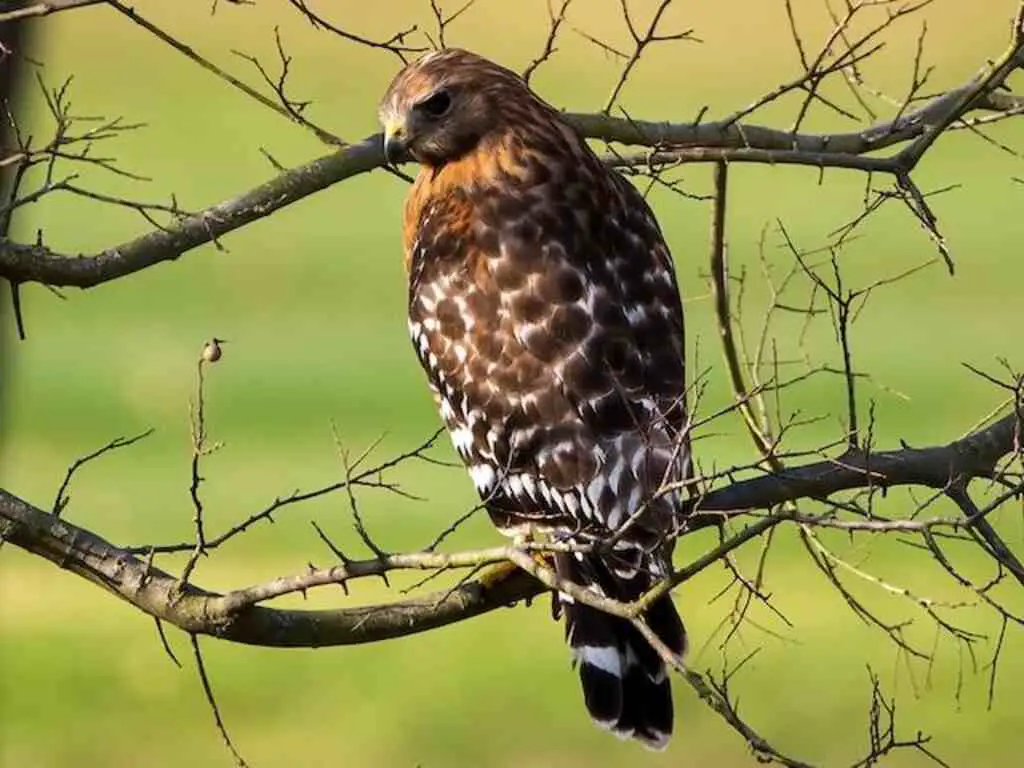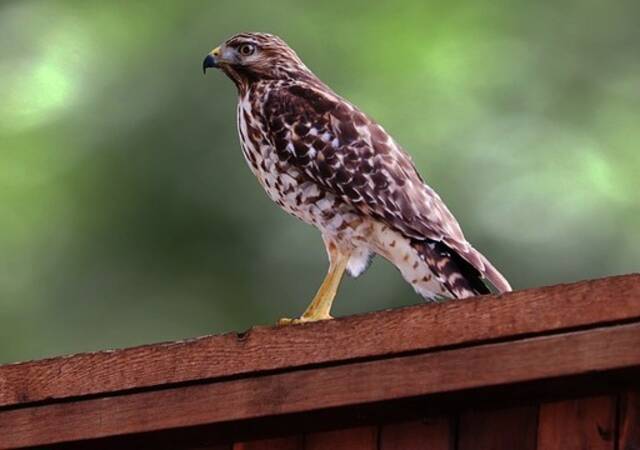Beneath the vast expanse of the sky, where predator and prey engage in an eternal dance, one question looms large: Do Hawks Eat Deer? Brace yourself, nature enthusiasts, for we are about to embark on a captivating journey to decipher this enigmatic riddle!
While the answer might surprise you, the reasons behind it will leave you hungry for more knowledge. So, let’s soar into the wilderness and explore the fascinating world of hawks, their insatiable appetites, and the delicate balance they maintain in our wild ecosystems.
Get ready to spread your wings and dive into the untamed depths of this avian enigma!
Table of Contents
The Importance of Understanding the Role of Predators in Ecosystems
Predator-prey relationships are an integral part of any ecosystem. Predators play a crucial role in maintaining the balance and diversity of species in their habitats.
They regulate prey populations, prevent overgrazing and help control disease outbreaks. One such predator that has fascinated researchers and nature enthusiasts alike is the hawk.
Known for their sharp talons and keen eyesight, hawks are feared by many smaller animals but admired for their hunting prowess.
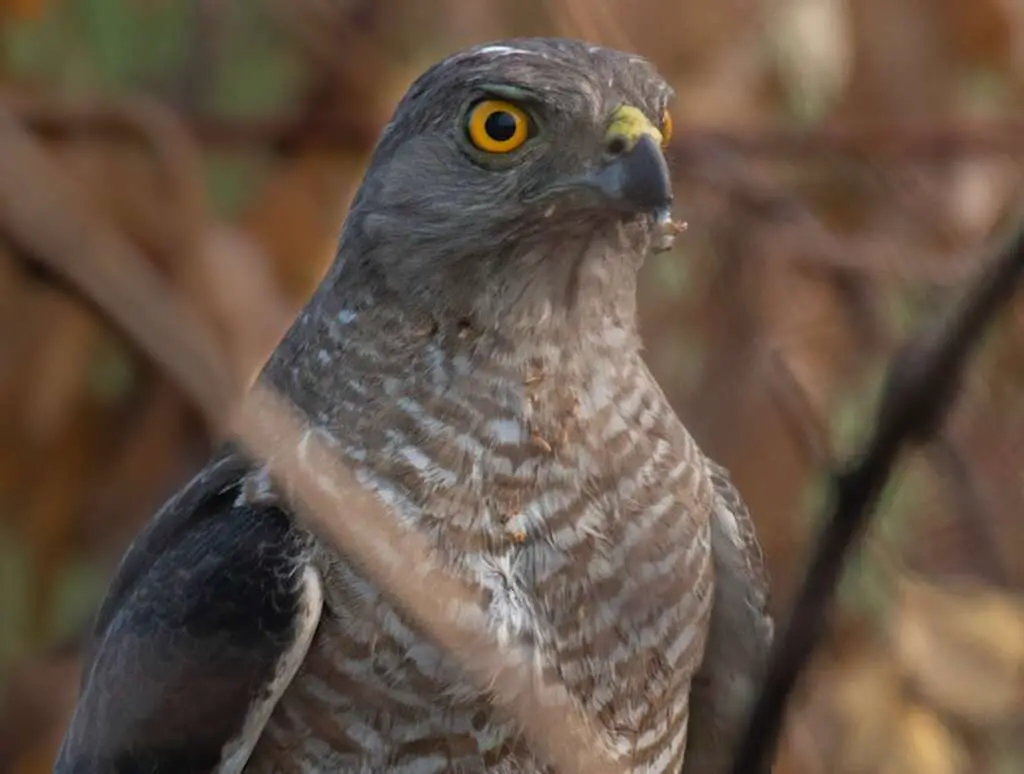
Do Hawks Eat Deer?
While hawks are known to hunt a variety of prey such as rodents, small birds, and snakes, there is much debate about whether or not they eat deer.
This topic has been the subject of many discussions among wildlife experts and enthusiasts for decades. Hawks belong to the category of raptors that include eagles, falcons, vultures among others.
These birds have powerful beaks and claws that they use to capture and kill prey quickly.
While some raptors like eagles can kill large mammals such as deer, there is less evidence to support hawks taking down prey that size.
The Importance of Hawks in Ecosystems
Hawks play a vital role in regulating populations within ecosystems by controlling the number of rodents, insects, snakes etc., which can help prevent disease outbreaks or overgrazing issues from occurring.
In addition to population control, hawks also help maintain biodiversity within ecosystems by creating niches for other predators or scavengers like foxes or coyotes who may feed on smaller animals left behind after a hawk has caught its prey.
Thesis Statement
Despite being known as fierce predators with sharp talons used for catching various types of game such as small birds and rodents, hawks are not known to be a primary predator for deer.
In this article, we’ll explore the basics of hawk diet, investigate whether or not hawks hunt deer and examine the impact they have on ecosystems overall.
Through this investigation of predator-prey relationships, we can better understand how ecosystems function and how to conserve them for future generations.
The Basics of Hawk Diet
Hawks are birds of prey and they are known for their sharp talons and strong beaks used for hunting. These characteristics make them very efficient predators.
Hawks eat a variety of prey, including small mammals, insects, reptiles, fish, and other birds. The exact diet of hawks varies depending on the species and the environment they inhabit.
Explanation of what hawks eat in general
Most hawks hunt during the day and their diet consists mainly of small mammals like mice, voles, rabbits, squirrels, and chipmunks.
Hawks can also hunt larger animals such as snakes or rabbits that weigh more than they do by using their sharp talons to grab onto the prey while in flight.
Some species of hawks also feed on insects such as grasshoppers or beetles.
Types of prey that are commonly hunted by hawks
Red-tailed Hawks are one example of a hawk that feeds on small mammals like rodents or rabbits.
Cooper’s Hawks specialize in hunting other birds like pigeons or songbirds while Northern Harriers prefer meadow voles as their primary food source.
American Kestrels have a diverse diet consisting of insects, small mammals like voles or field mice, and even reptiles.
Comparison between hawk diet and other bird species
While many bird species feed on seeds or fruit as the main part of their diet, hawks have more carnivorous diets compared to other bird species.
For example, pigeons primarily eat seeds while sparrows eat both seeds and insects.
Overall, it is clear that hawks have an incredibly versatile diet allowing them to thrive in many different environments.
The variety within their diets helps ensure that they can find food even when certain types become scarce making them important predators in maintaining balanced ecosystems around the world.
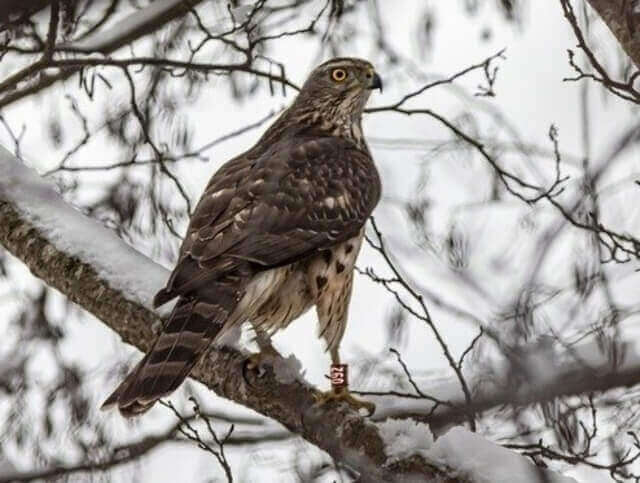
The Relationship Between Hawks and Deer
Overview of deer as a potential prey for hawks
Deer are herbivores and are not typically thought of as prey for birds of prey like hawks. However, there have been instances where small deer fawns have fallen victim to hawk predation.
Fawns are particularly vulnerable to hawk attacks because they lack the ability to run away or camouflage themselves effectively in their first few weeks of life. However, adult deer are not usually targeted by hawks.
This is because adult deer are much larger and more difficult to take down, requiring a much greater amount of effort on the part of the hawk.
Additionally, adult deer have antlers that can be used as weapons against predators like hawks.
Cases where hawks have been observed hunting deer
There have been several documented cases where hawks have successfully hunted small deer fawns. In one such instance, a red-tailed hawk was observed swooping down and carrying off a fawn in its talons.
The hawk then proceeded to eat the fawn on top of a nearby tree branch. Another instance involved a Cooper’s Hawk attacking and killing a small deer fawn in someone’s backyard.
The homeowner was able to capture the event on video and it quickly went viral on social media.
While these cases may be rare, they do occur from time to time and serve as a reminder that even large animals like deer are not entirely safe from predation by birds of prey.
Factors that influence hawk’s decision to hunt deer
There are several factors that can influence whether or not a hawk decides to hunt a particular animal, including size, behavior patterns, habitat preferences, and availability of other prey items.
For example, hawks tend to favor smaller prey items like mice or rabbits because they require less energy expenditure compared to larger animals like deer.
Additionally, hawks may be more likely to hunt deer fawns during times of food scarcity or when other prey items are not readily available.
Habitat preferences can also play a role in a hawk’s decision to hunt deer.
For example, hawks that inhabit forested areas may be more likely to target deer fawns than those that live in open grasslands where smaller prey items like rodents and insects are more abundant.
While hawks are not typically known for hunting deer as a primary food source, there have been documented instances where they have successfully taken down small fawns.
Understanding the relationship between hawks and their potential prey is important for maintaining a healthy and balanced ecosystem.
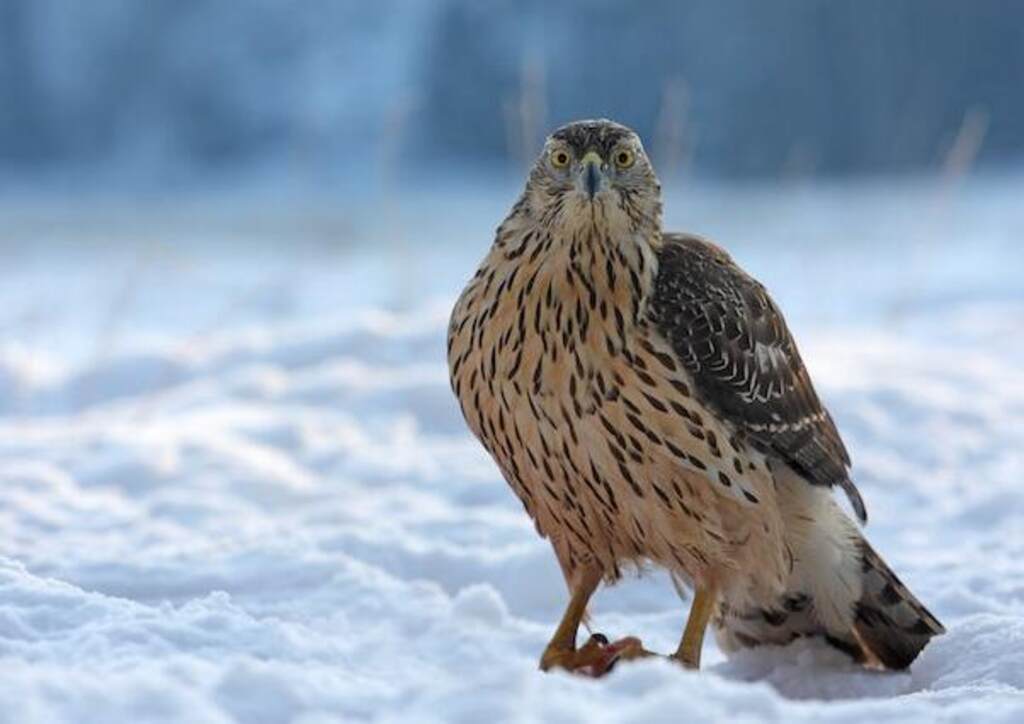
The Impact on Ecosystem
Deer Population Size and Behavior Patterns
Hawks have a significant impact on the ecosystem, particularly on the population size and behavior patterns of their prey, including deer.
The presence or absence of hawks can affect the number of prey species in an area.
For instance, when hawks are present in an area, they keep the population of smaller mammals such as rabbits and rodents under control.
This, in turn, creates less competition for food sources that are also used by deer.
Furthermore, hawks tend to target sick or weak animals within a herd making it easier for healthy individuals to survive and reproduce.
This natural selection process makes for stronger and healthier deer populations in general.
Moreover, when hawks are absent from an ecosystem due to hunting or habitat destruction, it can lead to overpopulation of herbivorous mammals like deer.
Overpopulation can result in depletion of vegetation resources for these mammals leading to malnutrition and starvation among the herd.
Therefore hawks help maintain a balance within ecosystems that is essential for all species’ survival.
The Role Played by Hawks
Hawks play an important role in maintaining a balanced ecosystem through their predatory activities targeting herbivorous mammals such as deer.
The presence of hawks helps limit overgrazing by herbivores which would otherwise negatively impact vegetation resources available to other animals within the ecosystem.
Additionally, Hawks are also known for keeping smaller predator populations under control through competition; thus ensuring that only the strongest predator species survive.
This leads to more balanced ecosystems with less competition among predators while allowing other species like herbivores enough time to graze without constant fear of predation.
In addition to this, Hawks also play an indirect role in reducing disease transmission within populations by targeting sick or weak individuals which could otherwise spread diseases quickly throughout entire herds or ecosystems.
Coexistence of Hawks and Deer
Hawks and deer can coexist in an ecosystem without causing significant problems to one another. In fact, the presence of hawks can benefit deer populations by keeping them strong and healthy.
However, when the population of hawks becomes too high, they may pose a threat to young or weak deer.
Furthermore, habitat fragmentation due to human development can lead to reduced numbers of both hawk and deer populations.
This is because hawks require large areas of open space for hunting while also requiring tree cover for nesting sites; thus reducing available habitats.
The same loss of habitat also affects herbivorous mammals such as deer who require significant vegetation resources.
Hawks have a significant impact on ecosystems by controlling predator populations which allows other species like herbivores enough time to graze on available vegetation resources.
Their role in eliminating sick or weak animals within herds strengthen the population as a whole while limiting disease transmission.
Overall Hawks help maintain balance within ecosystems that is essential for all species’ survival including that of the beautiful deer that roam our forests.
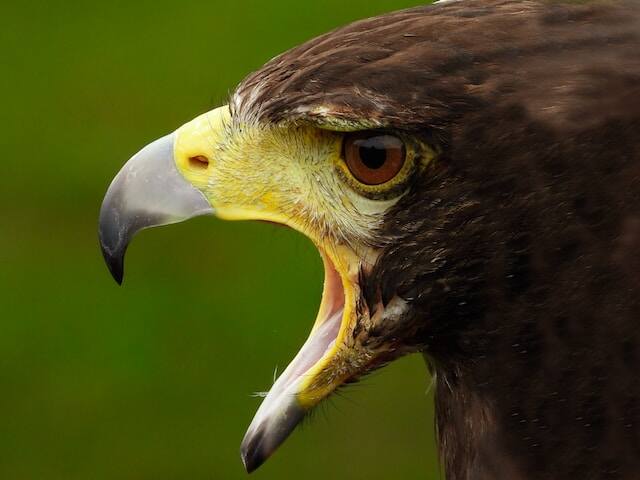
Conclusion
After exploring the topic of hawks and their relationship with deer as a potential prey, it can be concluded that while there have been cases of hawks hunting deer, it is not a common occurrence.
Hawks are known for preying on smaller animals such as rodents and birds, but they also play an important role in maintaining a balanced ecosystem.
Throughout this article, we have discussed the basics of hawk diet and the various factors that influence their decision to hunt certain prey.
We have also examined the relationship between hawks and deer, including instances where hawks have been observed hunting or attacking deer.
Despite the rarity of hawks predating on deer, it is important to understand predator-prey relationships for conservation efforts.
The presence or absence of predators like hawks can greatly affect the population size and behavior patterns of their prey species.
By maintaining a healthy ecosystem with diverse populations of both predators and prey, we can ensure long-term sustainability for our natural world.
It is clear that while hawks may not commonly hunt deer, they play an essential role in controlling other populations in their ecosystems.
It is crucial that we continue to study these relationships in order to better understand how we can protect our wildlife and maintain biodiversity for generations to come.
While there may be occasional overlap between hawk and deer habitats, these two species do not frequently interact in a predator-prey context.
However, by understanding these interactions between species we gain deeper appreciation for the interconnectivity of all living creatures within our world’s ecosystems.
FAQs: Do Hawks Eat Deer?
Can hawks eat deer?
While hawks are known to be skilled hunters, they do not typically target adult deer as their primary prey. However, there have been documented cases of hawks preying on small deer fawns, especially when they are vulnerable in their early weeks of life.
What do hawks usually eat?
Hawks have a diverse diet that includes small mammals like mice, rabbits, and squirrels, as well as reptiles, insects, and other birds. Their food choices vary based on the species of hawk and the environment they inhabit.
Are hawks important for ecosystems?
Absolutely! Hawks play a crucial role in maintaining ecosystem balance. By controlling the populations of rodents, insects, and snakes, they help prevent overgrazing and disease outbreaks. Additionally, their presence creates niches for other predators and scavengers, contributing to overall biodiversity.
Do hawks ever hunt large prey like deer?
While hawks are not typically known for hunting adult deer due to their size and antlers, there have been rare instances where they have successfully targeted and hunted small deer fawns. These cases serve as reminders that even large animals are not entirely safe from bird of prey predation.
How do hawks impact deer populations?
Hawks indirectly influence deer populations by regulating the numbers of smaller mammals that compete for food resources. This helps maintain a healthy balance, ensuring stronger and healthier deer populations. Without hawks, herbivorous mammals like deer could face overpopulation, leading to resource depletion and malnutrition.

